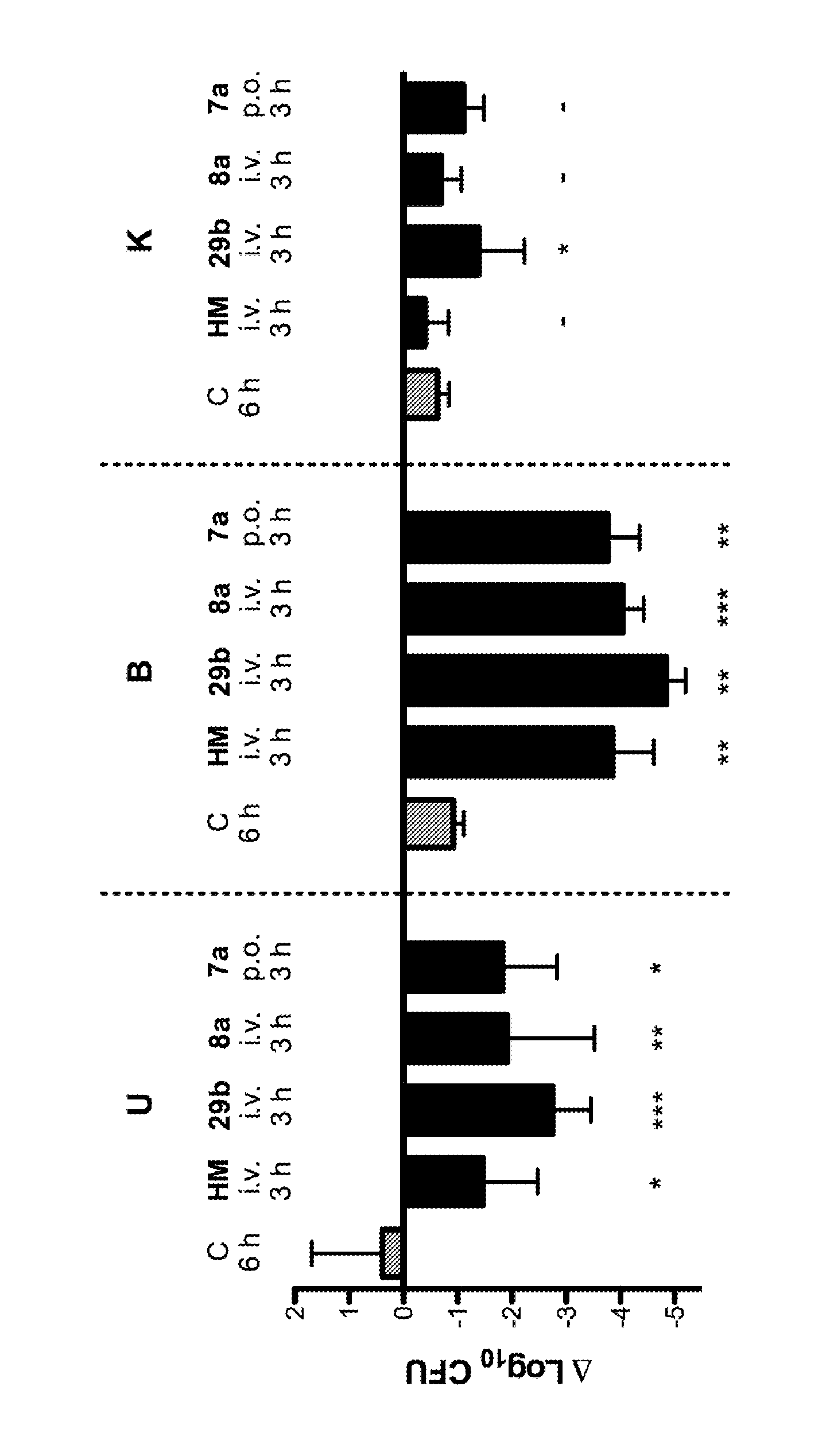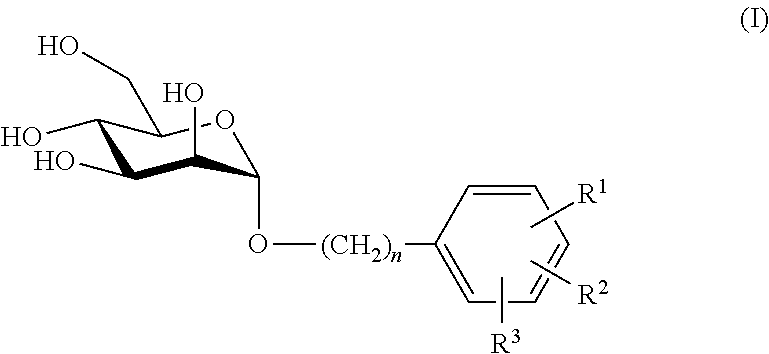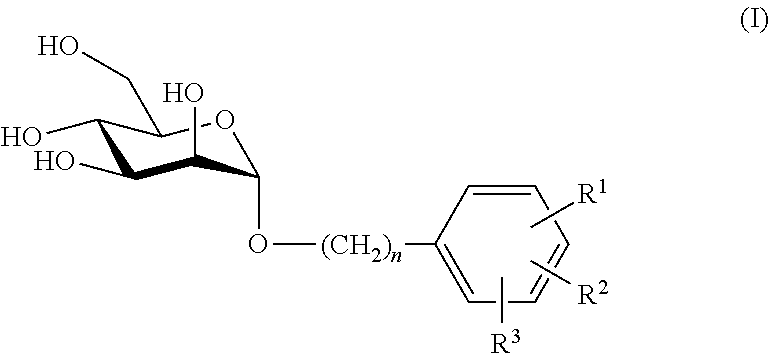Mannose derivatives as antagonists of bacterial adhesion
a technology of mannose derivatives and bacterial adhesion, which is applied in the field of derivatives of dmannopyranosides useful as antagonists of bacterial adhesion, can solve the problems of increasing the prevalence of uti, severe complications, and threatening urosepsis, and achieves a small reduction of bacterial counts and a lower response
- Summary
- Abstract
- Description
- Claims
- Application Information
AI Technical Summary
Benefits of technology
Problems solved by technology
Method used
Image
Examples
example 1
2,3,4,6-Tetra-O-acetyl-α-D-mannopyranose (2)
[0188]1,2,3,4,6-Penta-O-acetyl-α-D-mannopyranoside (1, 10 g, 25.6 mmol) is dissolved in DMF (55 mL). Hydrazine acetate (3.54 mg, 38.5 mmol) is added and the mixture is stirred at r.t. under argon for 3 h. Subsequently, the reaction mixture is dissolved in ethyl acetate (80 mL). The organic layer is washed with water (2×100 mL) and brine (1×100 mL). The aqueous layers are extracted with ethyl acetate (2×100 mL) and the combined organic layers are dried over Na2SO4. The solvent is removed in vacuo and the resulting residue purified by chromatography on silica gel eluting with petroleum ether / EtOAc (4:1 to 1:1) to give (2) (7.9 g, 89%).
example 2
2,3,4,6-Tetra-O-acetyl-α-D-mannopyranosyl trichloroacetimidate (3)
[0189]2,3,4,6-Tetra-O-acetyl-α-D-mannopyranose (2, 7.80 g, 22.4 mmol) is dissolved in dry dichloromethane (50 mL). Trichloroacetonitrile (11.25 mL) and cesium carbonate (730 mg, 2.24 mmol) are added and the reaction is flushed with argon. The mixture is stirred for 3.5 h at r.t. Removal of the solvent by evaporation under reduced pressure leaves a residue that is purified by chromatography on silica gel eluting with petroleum ether / EtOAc (19:1 to 1:1) to yield 3 (10.6 g, 96%).
example 3
4-Bromo-2-chlorophenyl 2,3,4,6-tetra-O-acetyl-α-D-mannopyranoside (5a)
[0190]To a stirred solution of 2,3,4,6-tetra-O-acetyl-α-D-mannopyranosyl trichloracetimidate 3 (2.38 g, 4.84 mmol, 1.0 equiv) and 4-bromo-2-chlorophenol (4a, 1.20 g, 5.80 mmol, 1.2 equiv) in toluene (20 mL) under argon, TMSOTf (107 mg, 0.484 mmol, 0.1 equiv) is added dropwise via syringe. The reaction is stirred at r.t. for 5 h and then diluted with toluene (15 mL) and quenched with saturated aqueous NaHCO3 solution (15 mL). The layers are separated and the aqueous layer is extracted with toluene (3×15 mL). The combined organic layers are dried over Na2SO4 and concentrated in vacuo. The residue is purified by flash chromatography (petroleum ether / EtOAc, 19:1 to 1.5:1) to yield 5a (538 mg, 85%) as a white solid.
[0191][α]D20 +60.6 (c=0.40, CHCl3); 1H NMR (CDCl3): δ 2.02 (s, 3H, OAc), 2.02 (s, 3H, OAc), 2.04 (s, 3H, OAc), 2.18 (s, 3H, OAc), 4.05 (dd, J=2.3 Hz, 12.2 Hz, 1H, H-6a), 4.10 (ddd, J=2.7 Hz, 5.3 Hz, 7.6 Hz, ...
PUM
| Property | Measurement | Unit |
|---|---|---|
| boiling point | aaaaa | aaaaa |
| boiling point | aaaaa | aaaaa |
| boiling point | aaaaa | aaaaa |
Abstract
Description
Claims
Application Information
 Login to View More
Login to View More - R&D
- Intellectual Property
- Life Sciences
- Materials
- Tech Scout
- Unparalleled Data Quality
- Higher Quality Content
- 60% Fewer Hallucinations
Browse by: Latest US Patents, China's latest patents, Technical Efficacy Thesaurus, Application Domain, Technology Topic, Popular Technical Reports.
© 2025 PatSnap. All rights reserved.Legal|Privacy policy|Modern Slavery Act Transparency Statement|Sitemap|About US| Contact US: help@patsnap.com



